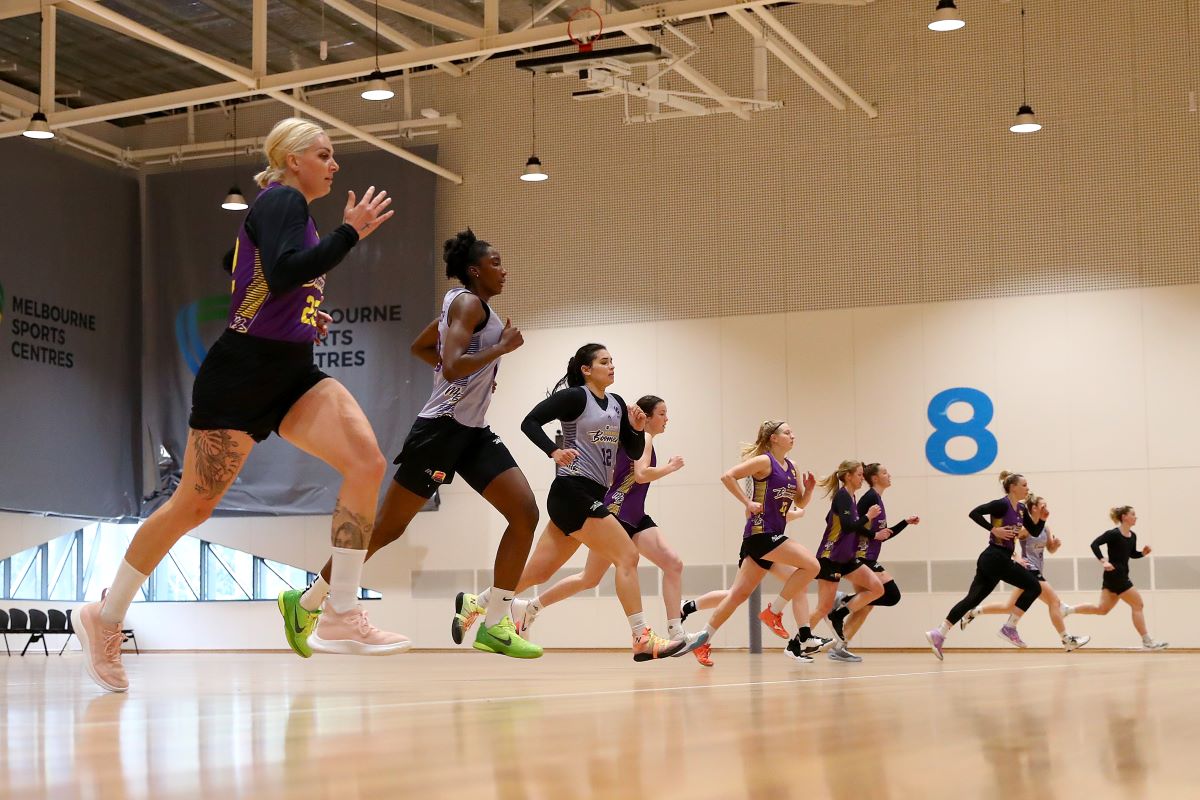Suicide drills, the name might surprise you, but is a kind of workout primarily undertaken by most athletes across various sports.
A high-intensity sprinting drill, suicides consist of running to multiple progressively distant lines, within a set, as fast as you can. Speed, endurance, and agility are all highlighted when running suicides as they test your ability to push through mental and physical fatigue to meet your goal. Suicides (Shuttle Runs) can be done almost anywhere — at the park, in the gym, at a yoga studio, or on a tennis or basketball court — all you need are running shoes and some props to serve as markers.

Examples of Suicide Drills
Forward Suicides – An athlete will sprint forward to the 5-yard line, sprint back to the start, sprint to the 10-yard line, sprint back to the start, sprint to the 15-yard line, sprint back to the start, sprint to the 20-yard line, and finally sprint back to the start.
Karaoke Suicides or Carioca Suicides – This is a lateral speed drill that uses the Karaoke or Carioca technique (a cross-stepping movement) in order to complete the suicide running drill.
Lateral Suicides – This is another suicide drill variation. However, with this exercise, the athlete will perform a lateral shuffle (versus a forward sprint) to each cone or designated yard line.
Note: All stretches and exercises need to be supervised by a trained martial arts instructor in order to prevent injuries and to ensure the proper technique is utilized.
How to Perform a Suicide Drill?

- Set up your markers if you are running drills in an area that does not have marked lines. Place three to six markers about 6 yards apart, with an additional marker serving as your start/finish line. Use anything that is available as markers, such as towels, Frisbees, or tennis ball cans.
- Warm up by jogging at a moderate pace for five to 10 minutes; running sprints with cold muscles can lead to an injury.
- Begin at the starting line and sprint to the first line or marker. Touch the marker with your hand and then sprint back to the starting line. Sprint to the second line or marker immediately; touch the second marker and sprint back to the starting line. Continue the pattern until you have run to all of the lines. That is one set.
- Aim to perform suicides for 20 minutes, completing as many sets as possible within the time frame. Recover from each set with one to two minutes of walking or light jogging.
- Cool down by walking or jogging at a slow pace through the suicide set one or two times or until your breathing returns to normal.
- Follow your workout with 10 to 15 minutes of full-body stretching to aid in recovery; focus especially on your quadriceps, hamstrings, calves, and glutes. Breathe in through your nose for a count of five and exhale out of your mouth for a count of five while stretching. Hold each stretch for at least 20 to 30 seconds.
Can I Practice Suicide Drills?
If you’re considering incorporating the suicides workout into your fitness routine, a consultation with a qualified fitness trainer or healthcare provider is strongly recommended.
They will assess your individual health circumstances, fitness level, and any potential limitations you might have. On top of that, they are going to provide personalized guidance on whether the suicides workout is appropriate for you.
The suicide workout can be adapted if you have a specific goal to achieve, but your safety and well-being should always be the top priority when considering any new exercise regimen.
Warning
Start slow if you are a beginner and gradually increase your pace and duration as you become stronger. Suicides can be intense; stop running if you feel faint or dizzy at any time during the drill.
Consult with your physician before increasing the intensity of your running workouts.
Ref:
https://www.sportskeeda.com/
https://www.weekand.com/
Disclaimer
The Content is not intended to be a substitute for professional medical advice, diagnosis, or treatment. Always seek the advice of your physician or other qualified health provider with any questions you may have regarding a medical condition.










